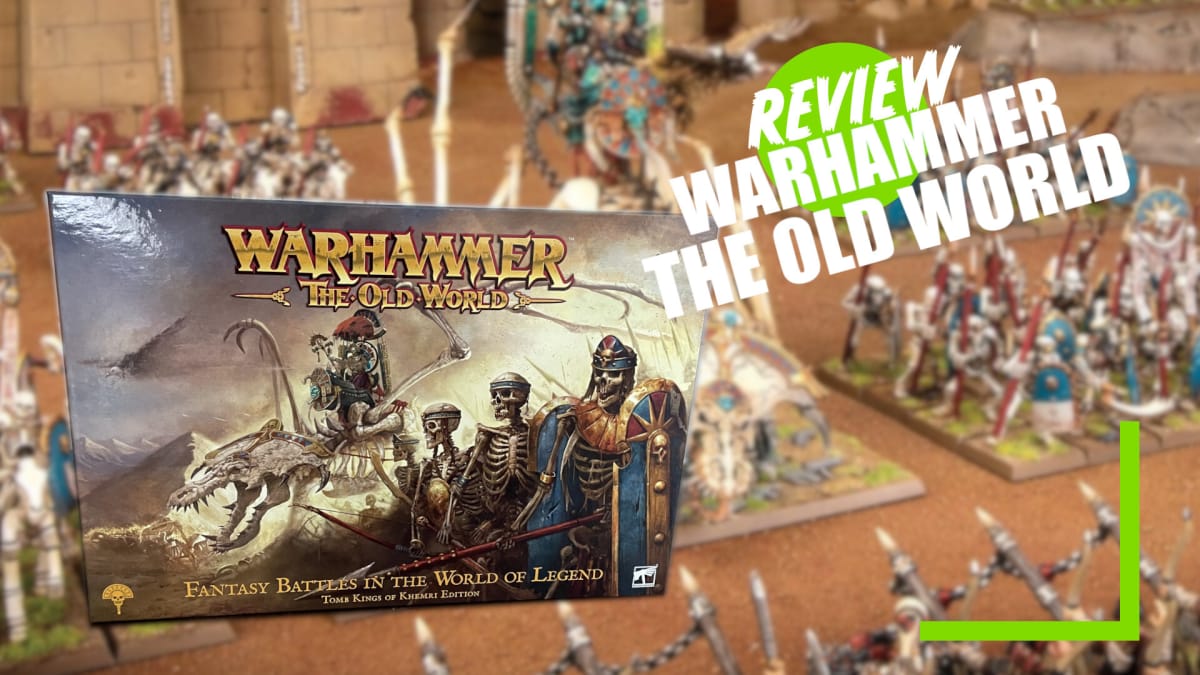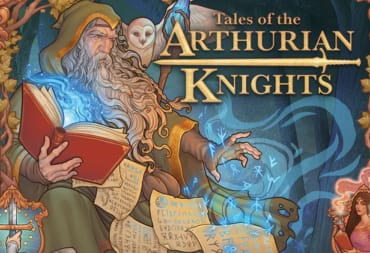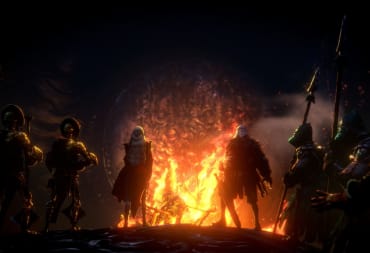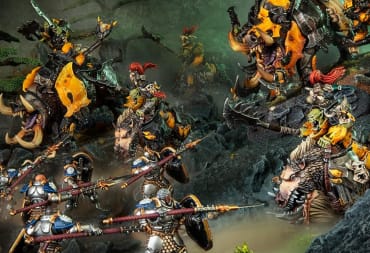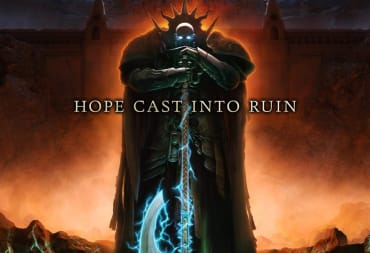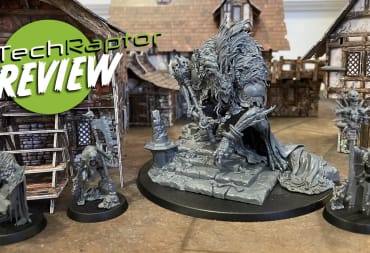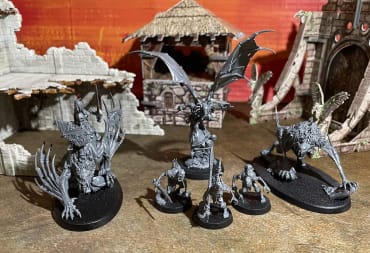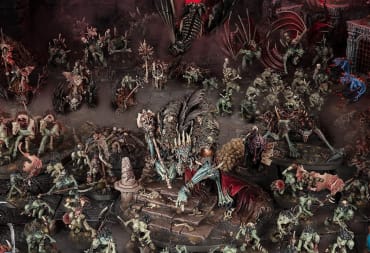Dust rises from ancient tombs. The clang of armored horses clopping to war rises above rolling thunder. There’s trouble brewing in the World-That-Was, but you’ll have no lightning-riding champions to save you, and you better stay in close formation! Games Workshop sent us a copy of the Tomb Kings Old World Box Set, so join us on a trip (kind of) back in time for our Warhammer: The Old World Review.
What Is Warhammer: The Old World?
Warhammer: The Old World is a miniatures strategy war-game from Games Workshop, set in the world before the events of their flagship fantasy game Age of Sigmar. But the jump back in time isn’t just in the lore - this is a game allowing players to use old models on square bases - and the rules are inspired by (but not an exact copy of) the rules at play in their original fantasy game Warhammer Fantasy Battles.
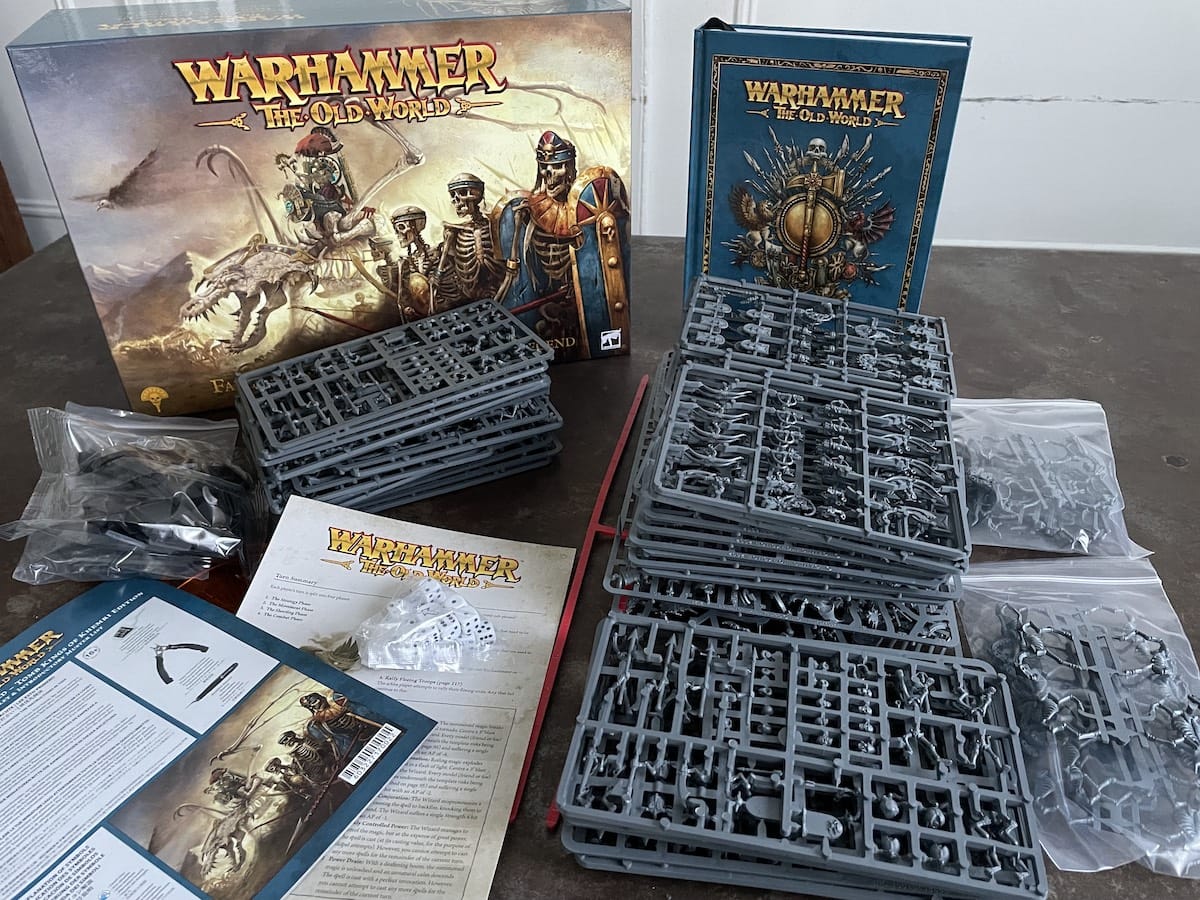
I’ll admit, I first got into the wargaming hobby relatively recently - just a few years ago in a post-Age of Sigmar world. So this won’t be your go-to review to see a point by point breakdown of the ways it differs from Fantasy Battles. I’m going to review it as a standalone product and game system, and you can judge for yourself if you’re a fan of the original.
What Do You Need To Play Warhammer: The Old World?
To play Warhammer: The Old World, you and an opponent will each need an army of an agreed upon point value (each unit, weapon upgrades, etc. each have their own point value), the rules to the game, measuring equipment in inches, and special damage templates (like ones for measuring blast damage).
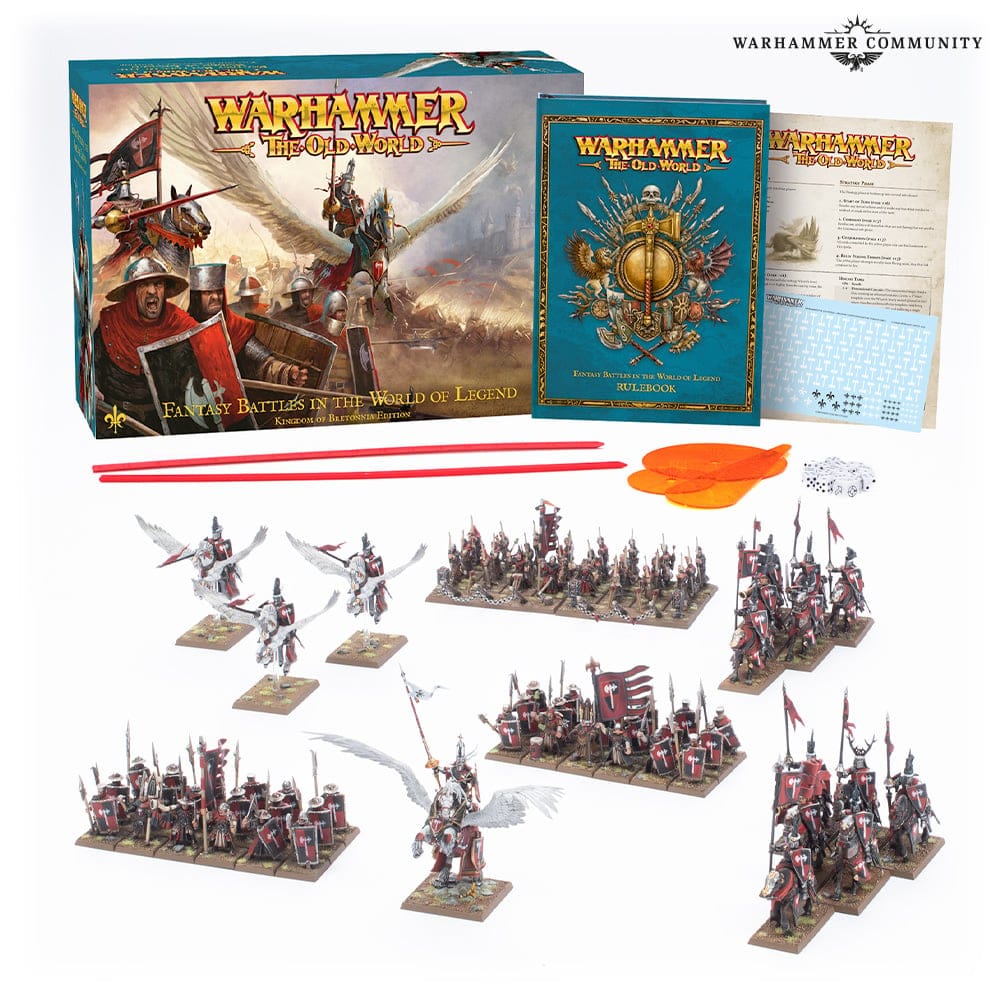
It’s important to note that the two Warhammer: The Old World box sets - one of the Tomb Kings and one for the Kingdom of Bretonnia - are not two-player sets. Each has enough for one player to start their journey.
In the Warhammer: The Old World Tomb Kings box set that we received, the box contains a slew of miniatures (each box contains a 1250 point army of all-plastic miniatures).
It also includes a hardback Warhammer: The Old World rulebook, a quick, four page reference sheet, twenty D6 dice, one six-sided “scatter die” which helps determine the direction of things like cannonballs, three special damage templates, and two long, red plastic measuring sticks.
What Is The Turn Sequence In Warhammer: The Old World?
A game of Warhammer: The Old World is played in rounds and turns, with each player taking one complete turn in a round. The sequences in a Turn are as follows:
- The Strategy Phase: Here, players cast any Enchantment or Hex spells, use special rules that key off during this phase, and try to rally any units that are fleeing.
- The Movement Phase: With the Movement phase, as you’d imagine, players move their units. Charges are declared, reactions to those charges are declared, and other movement of units is carried out, along with any spells that are “Conveyance” spells.
- The Shooting Phase: In the Shooting phase, players use the ranged weapons of their units, and attempt to cast ranged “Magic Missile” and “Magical Vortex” spells.
- The Combat Phase: Finally, there’s the Combat phase, where units clash, wizards cast melee-focused “Assailment” spells, and it is determined if any units that lost combat begin to flee.
After one player takes all of these turns, it’s the next player’s turn to go through the sequence, and we begin again with most games lasting six total rounds.
What Is It Like To Play Warhammer: The Old World?
As someone who is much more familiar with the speedy Age of Sigmar, (and the lightning-fast Warcry), games of Warhammer: The Old World certainly have a different pace. I wouldn’t necessarily call them slower games, but they’re definitely more measured, for a multitude of reasons that I’ll speak to here at length, because they encapsulate what I think is interesting (and what other players may dislike) about the game.
The Rank And File Movement Of Warhammer: The Old World
Units in Warhammer: The Old World are arranged in block formation, better known as “rank and flank.” This means that, unless they have a special rule saying otherwise, the majority of units in the game move together in a block. The speed for these blocks is also usually a bit slower. Think of this not as the crush of armies smashing against each other, but an inevitable march of doom.
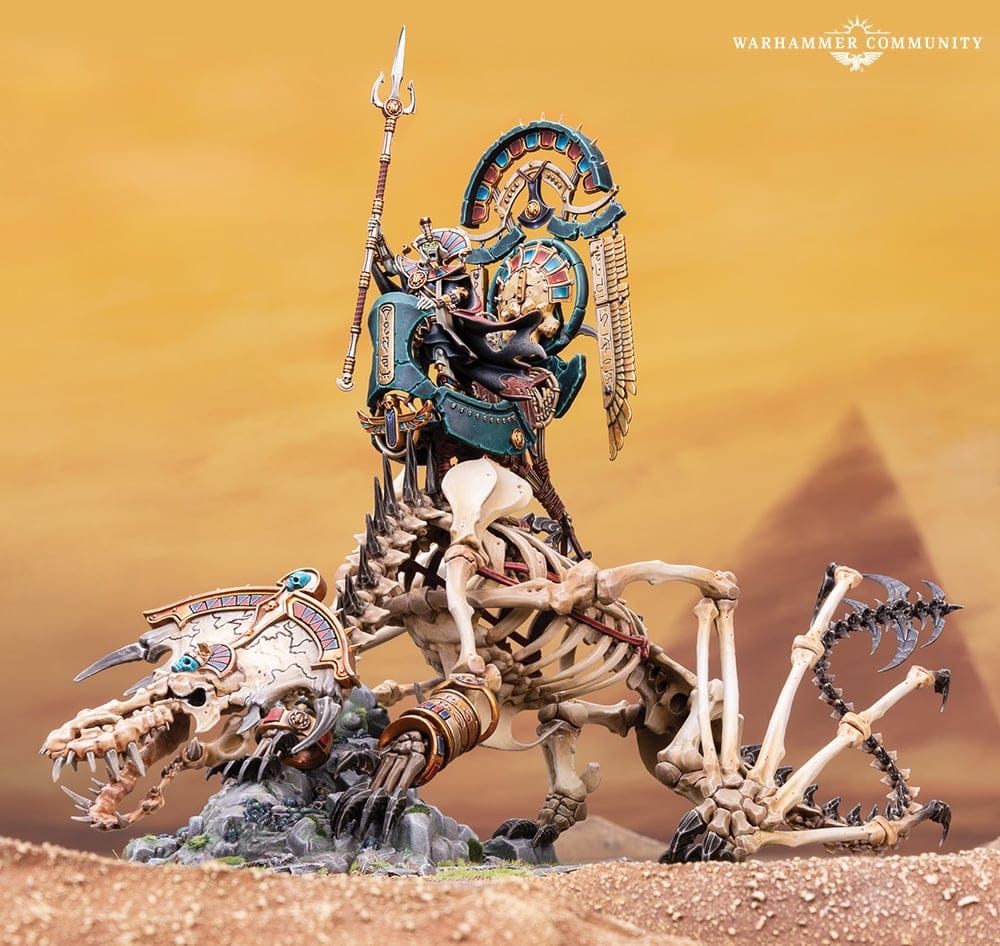
I really like this, though sometimes it can be confusing to get a grip on all the movement rules (Want to reform your unit by turning them around and changing formation? That takes up your whole move. Want to bring more units to your front rank? That takes up half your move.). In essence, this front-loads a lot of planning in your movement phase.
The Weapon Profiles And Special Rules of Warhammer: The Old World
In Age of Sigmar, if a unit’s weapon does something special - it’s listed right on the weapon’s profile. In Warhammer: The Old World, much like in their other old-school style off-shoot game Horus Heresy, a weapon is simply listed on the unit’s profile.
From there, you’ll check the weapon’s attributes in the rulebook, which shows how far it can fire if it’s ranged, how hard it hits, and any special rules accompanying it. To learn about those special rules, you’ll have to turn to another rulebook page.
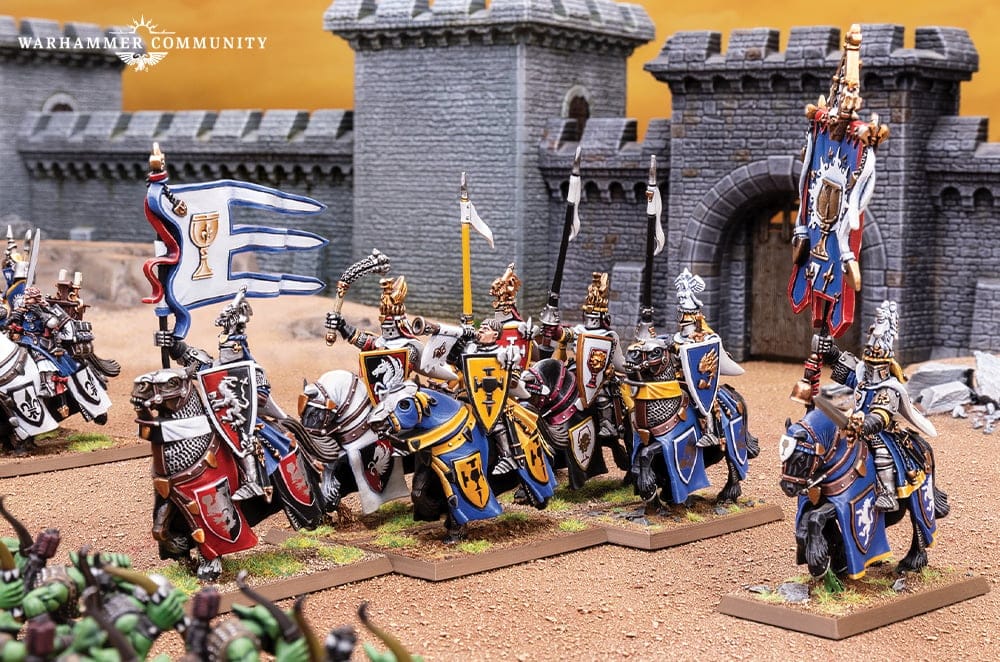
At first, this approach is obviously daunting seeming. But once we began to understand the special rules of weapons and played with them a bit, it was easy to remember the specifics. For instance, it only took one round of shooting with warbows to remember that they fire 24” and have the “Volley” special rule (which means that some models behind the first rank can also shoot.
I recommend writing down all the weapons and special abilities of your army in a quick-reference cheat sheet. It’ll save a LOT of time and page-flipping.
The Back And Forth Nature of Warhammer: The Old World
There are many moments in a game of Warhammer: The Old World that evoke a nice sense of back and forth. And while this can slow the action slightly, it creates a nice, tense feeling.
To start, when players declare a charge - they don’t simply roll for it and move on. Instead, after a charge is declared, the opposing unit being charged can attempt to flee, stand their ground, or fire arrows at the charging unit.
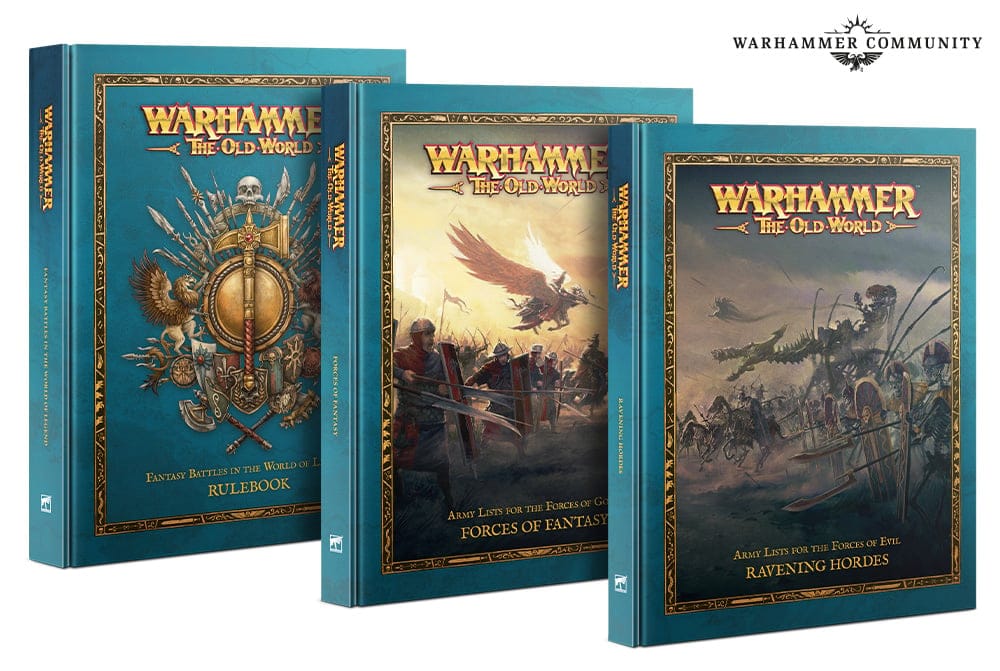
This is just one of several ways that the game feels less like an “I go, you go” type of game, and instead feels very interactive.
What Are Our Final Thoughts On Warhammer: The Old World?
I don’t think this will be the only coverage of the game to say Warhammer: The Old World isn’t for everyone. With its slowed down and old-school approach to wargaming, it may be a bit of a higher barrier to entry than some folks are used to. But, I will say, I truly don’t believe that it’s for as small an audience as one might expect at first glance.
Beneath a bit of back and forth, beneath a more fiddly approach to movement, beneath weapon profiles and special rules, lies a fun, challenging, epic-feeling system that truly plays like two massive armies smashing up against one another.
And if you’re at all into retro-style art and (literally) older miniatures, the feel of this game - especially with its use of the color blue as a through-line color, just screams nostalgic for me.
Warhammer: The Old World, at least in the opinion of this modern wargamer, feels like a fresh but devoted approach to a classic way to game. I’m hooked, and I hope other newcomers join me in the World-That-Was.
Should I Buy Warhammer: The Old World?
If you have an old army lying around that you’re willing to re-base (the square bases are now slightly larger), it’s definitely worth checking out the rules and Army Journals that will be released for each faction. If you’re new to the game but not scared off by the things that make it a bit crunchier, one of these massive boxes may be right for you.
If, however, you prefer your wargaming to be much more on the quick and brutal side, Warhammer: The Old World will definitely feel too fiddly for you.
The copy of Warhammer: The Old World used in the creation of this review was provided to us by Games Workshop.
Review Summary
Have a tip, or want to point out something we missed? Leave a Comment or e-mail us at tips@techraptor.net
